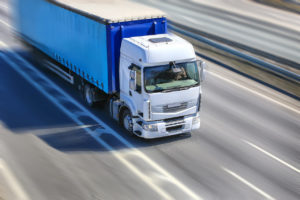Fixed asset – let’s start at the beginning
The PIT Law does not concretize the definition of a fixed asset, but Art. 22a para. 1 of the Law specifies which assets are subject to depreciation. It reads that fixed assets include structures, buildings and premises under separate ownership, machinery, equipment and means of transportation, and other items that meet the following conditions:
- their expected useful life is more than a year;
- are used by the taxpayer for purposes related to his business activity or have been given for use under a lease, rental agreement or an agreement referred to in Art. 23a pt. 1.
In order to count a car (including a truck) as a fixed asset and be able to make depreciation deductions, it is not enough for the vehicle to meet the two criteria listed above. The Income Tax Law lists further conditions independent of the expected useful life. Depreciated vehicle:
- must be owned or co-owned by the taxpayer;
- should be complete and fit for use on the date of acceptance for use;
- was acquired by the entrepreneur on his own.
Depreciation of fixed assets – an attempt at definition
We already know what conditions a vehicle must meet for depreciation to be possible. So let’s establish what depreciation actually is and the benefits to the entrepreneur of taking depreciation deductions.
Depreciation is called the reduction in the value of things occurring as a result of their use. Systematic depreciation deductions are intended to illustrate the actual state of affairs, i.e. the real value of things.
Depreciation write-offs should be scheduled over a specific period of time – it is worth noting that the first write-off can be made no earlier than one month from the date the fixed asset is entered in the records. Depreciation is terminated in one of three cases: when the value of depreciation charges equals the initial value of the vehicle, when the business is sold or when the business is liquidated.
Depreciation methods for trucks and other fixed assets
There are several methods of depreciating fixed assets. Among the most popular are the straight-line method, the one-time method and the declining balance method. Note that the second and third mentioned techniques can only be applied to fixed assets that belong to groups: 3-6 and 8 of the Fixed Asset Classification. Particularly noteworthy in the context of the topic of today’s entry is group 7. This includes means of transportation excluding passenger cars.
Straight-line depreciation
The simplest and most common method is straight-line depreciation, in which the asset is assumed to wear out at the same rate throughout the year. It involves making monthly depreciation deductions of equal value. The depreciation rate is chosen based on the Fixed Asset Classification.
Degressive depreciation of a truck
The application of declining depreciation is possible for means of transportation other than passenger cars. With this method, it is assumed that the productivity of a fixed asset decreases over time. In the first year, the depreciation rate is increased by a factor of no more than 2, and depreciation in that year is determined on the initial value, in subsequent years on the initial value less the value of the write-offs made. If the write-offs calculated by this method would be lower than according to the straight-line method, the taxpayer shall make write-offs using the straight-line method. The declining balance method is very beneficial to the taxpayer, as the value of depreciation allowances in the initial period is much higher than in later years.
Accelerated depreciation
The taxpayer also has a choice of the accelerated method, otherwise known as the individual depreciation rate method. It provides an opportunity to set an individual rate for the acquisition of used or improved fixed assets. It should be remembered that such an option exists only for measures entered into the records for the first time.
Depreciation of a truck
For trucks classified as fixed assets, entrepreneurs have the option of using one of four depreciation methods: straight-line, one-time, declining balance and individual rate. Each of these methods has distinctive features:
One-time depreciation
For trucks (which meet the Law’s conditions for a truck), entrepreneurs can apply one-time depreciation under de minimis aid. The total amount of depreciation during the tax year may not exceed €50,000. What may be important about this method is that it does not matter how the entrepreneur acquired the vehicle (the money can come either from the entrepreneur’s own funds, from company assets or from a loan). In such an arrangement, the entire value of the vehicle should be entered in the P&L in the month in which the car was accepted for use in the company.
Straight-line depreciation
In this case, the maximum annual depreciation rate cannot exceed 20%. The maximum depreciation period in this case is 5 years. This means that an entrepreneur can make a maximum of 60 depreciation entries.
Declining depreciation
This method allows entrepreneurs to depreciate a vehicle used in the company faster by using a higher depreciation coefficient (maximum 2.0). By triggering a higher depreciation rate, the depreciation period can be reduced by up to two times. In the case of declining depreciation, the depreciation base decreases each year by the amount of write-offs made in the previous tax year. This continues until the value of the installment to be written off would be less than the installment under the straight-line method. Henceforth, the taxpayer is required to apply straight-line depreciation to the asset in question
Depreciation of a truck with an individual rate
The minimum depreciation period for a car using the individual rate method is 30 months, but two conditions must be met in order to apply it:
- the depreciated vehicle must be entered in the taxpayer’s fixed asset register for the first time,
- must meet the condition of being considered a used or improved fixed asset.
These are all the available methods of truck depreciation already. We hope that the information in our guide will make it easier to choose the optimal method for your business.


